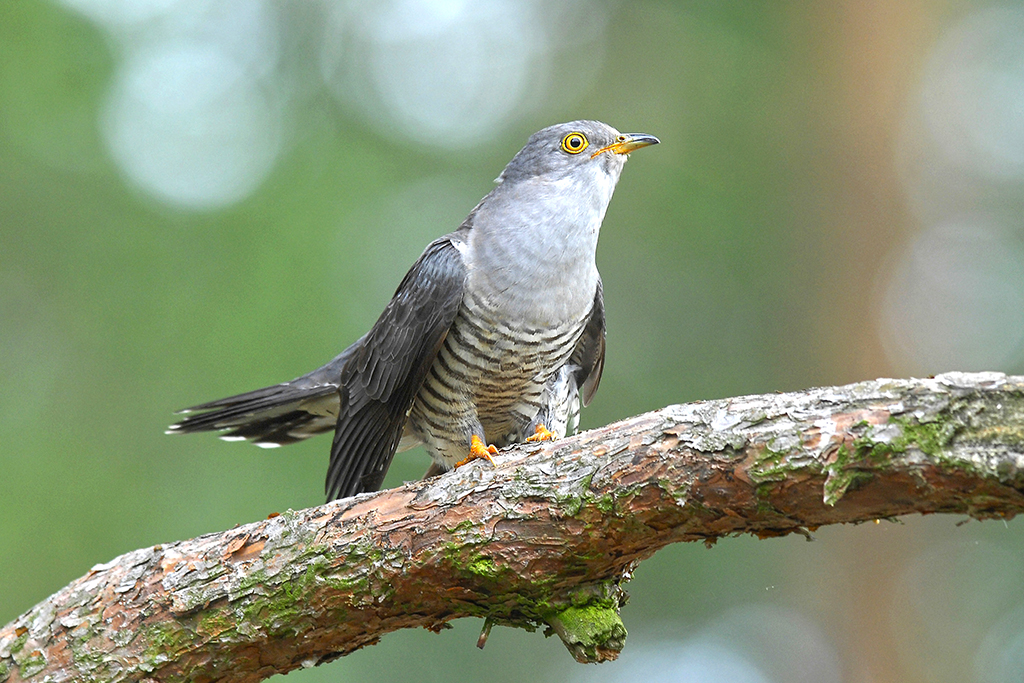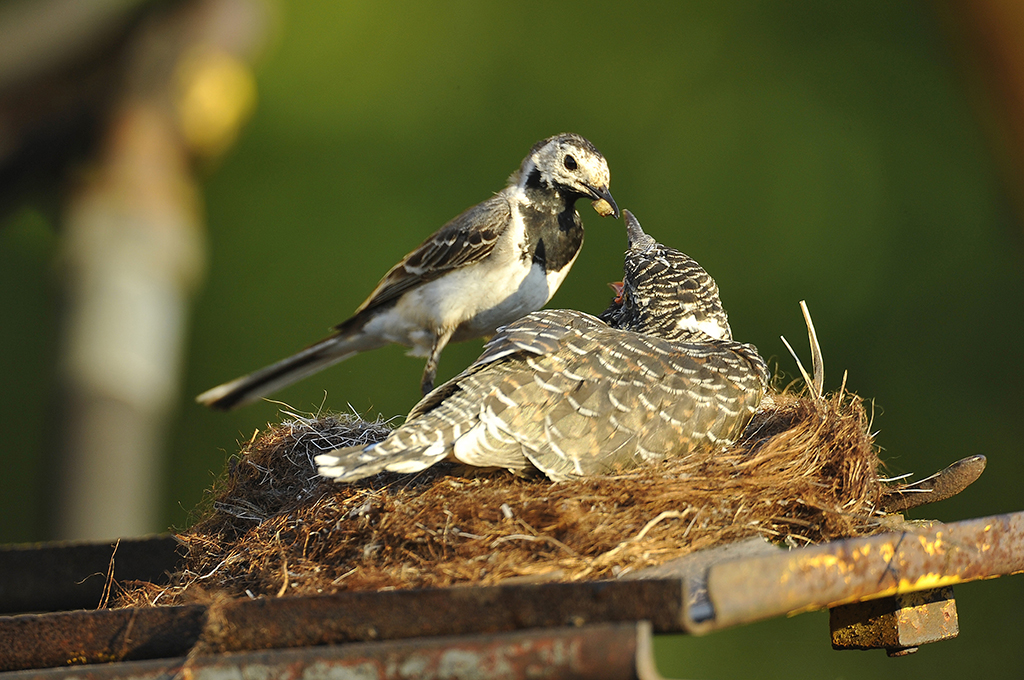Towards the end of April every year, I, like millions of other country people, have my ears cocked listening out for spring’s first cuckoo.
It is one of nature’s finest sounds and never fails to send a frisson of excitement through me.
But in recent years it has become more difficult to witness that celebrated arrival, and even visiting well-known cuckoo habitat is no guarantee of hearing the bird’s song.
In the past I have sat out on the hill surrounded by woodland on balmy spring evenings, calling the birds in close with a wooden cuckoo-caller, relishing the experience as several irate males appear to drive off the perceived imposter while they in turn are frantically scolded by fl ocks of furious songsters. Once they realise there is no competitor, they quickly fly away to perch on a prominent branch, and the evening sky echoes to their calls again.
For centuries the return of this extraordinary creature has been met with something akin to worship, and is religiously recorded. The cuckoo is with us for a very short time and only utters its distinctive call for mere weeks, but it is revered. An old country poem relates: ‘The cuckoo comes in April, sings the month of May, changes its tune in the middle of June, and in July he flies away.’
The cuckoo is an extraordinary bird. It has caused more conjecture and mystery, and generated more folklore, than any other. The date of its arrival has even been the subject of hundreds of letters to The Times, where correspondents have bantered back and forth, vying to be the first to have heard an early bird (the earliest verified record of the bird’s return to the British Isles is 20 February 1953).
The cuckoo has also caused intense speculation and heated debate about its behaviour. It was originally thought to make a spring debut before disappearing to hibernate in a tree stump where it evolved into a hawk (not such a daft idea, for as any naturalist will vouch, the bird’s barred grey plumage and silhouette bear more than a passing semblance to that of a sparrowhawk).

More fantastic were tales of cuckoos emerging from the embers of a fire when their particular tree had come under the woodcutter’s axe.
The cuckoo is one of the most widespread breeding birds in Europe. Male cuckoos begin calling as soon as they reach this country following their winter migrations. But despite having such a distinctive call, the bird itself is rarely seen – a point made by William Wordsworth in his beautiful poem ‘To the Cuckoo’: O Cuckoo, shall I call thee Bird or but a wandering Voice?
While male cuckoos advertise their presence vocally, birds of either gender are shy and secretive. The female’s call is a bubbling cackle, a cheeky avian chuckle appropriate to the sly, measured activities that ensue.
Until the early years of the last century, it was thought that she laid her egg, swallowed it, and then regurgitated it into the nest of some unfortunate passerine. Argument raged in birding circles, with some enthusiasts even swearing to have witnessed this. Between 1918 and 1925, however, two dedicated naturalists, Edgar Chance and photographer Oliver Pike, finally revealed the truth about the cuckoo’s intriguing breeding behaviour.
The female waits patiently until her chosen host leaves the nest, and within the blink of an eye flies swiftly to it, deftly depositing her own egg neatly into it. This is done at the precise moment when it will stand the best chance of hatching out before the eggs of the host. Female cuckoos literally shoot their eggs from out of a specially adapted cloaca; some may lay as many as 25 eggs in a season, leaving them in nests all over a given area.
Each cuckoo favours a particular species of small bird and, in a brilliant quirk of nature, adapts her own egg to a similar size and colour as that of the chosen victim. The most common hosts are meadow pipit, reed and sedge warbler, and dunnock, though other species such as redstart, robin and spotted flycatcher can be chosen. Even hatching out first does not guarantee the survival of the host’s eggs; as soon as the baby cuckoo hatches it will quickly attempt to oust the unfortunate chicks until it is the only one remaining in the nest.
A tiny newly hatched cuckoo nestling also cleverly manoeuvres any unhatched eggs out of the nest to be smashed below. It is thought that the female cuckoo often chooses the same species that reared her. This bizarre behaviour is called ‘obligate brood parasitism’ and the cuckoo is the only bird in the world that behaves in such a manner. Meanwhile, the unfortunate host is quickly dwarfed by its massive gluttonous offspring, and kept frenetically busy in an endless quest to feed it.
Despite this, things with the cuckoo are far from well; they have suffered a 72% decline in the last 25 years, though the problem seems less acute in Scotland than it does in England where, in many places, they have disappeared totally.

As migrants they are vital indicators of environmental changes and have been affected by widespread industrialism and habitat loss, and seasonal changes not only in the British Isles but also on passage and in their African wintering grounds. Droughts in the Sahara and cooler springs on arrival bring problems. In Scotland, where they favour fox moth and northern eggar caterpillars, recent late springs point to the fact that cuckoos and their food source are out of sync.
The British Trust for Ornithology has been carrying out groundbreaking research on the cuckoo after successfully managing to radiotag several birds.
The peregrinations of one satellite-tagged male have revealed a great deal. Caught at Norfolk in June 2011, it was named after BTO president and wildlife presenter Chris Packham.
Dr Chris Hewson, lead scientist on the project at the BTO, says, ‘Chris the cuckoo is a real hero of ornithology. The tag he is carrying has helped us to understand the pressures that he and our cuckoos face on their hazardous migration to Africa. He has survived sand storms, hail storms, an exceptionally cold, wet summer, predators over the Mediterranean and in the Congo rainforest, and has crossed the Sahara Desert a whopping seven times since we started following him.’ That amounts to 60,000 miles through at least 22 countries over three years.’
As Hewson, himself says: ‘This truly remarkable bird deserves a medal for what he has given to the understanding of bird migration, but even more remarkable is the way in which BTO scientists use the very latest technology to produce contemporary science and then communicate it to a wide audience.’
That wide audience is growing increasingly concerned. This is a global issue with no clearcut answers; it would seem that unless we can reverse the current trend in the frightening decline of one of our most extraordinary birds, future generations will tragically find that none flew over the cuckoo’s nest.
TAGS

